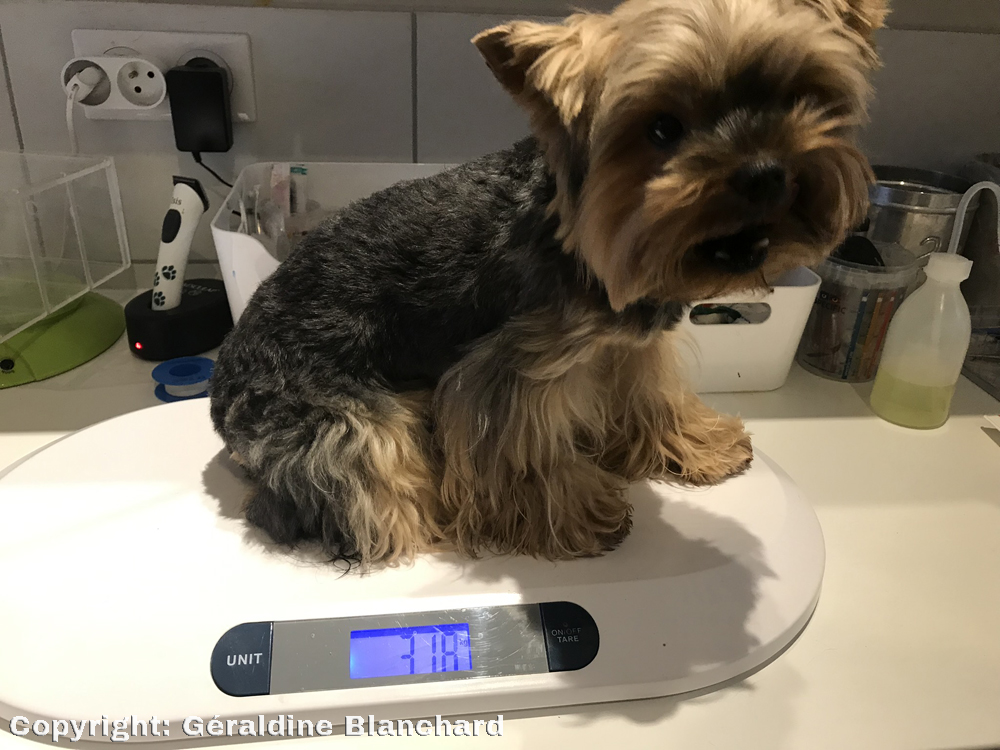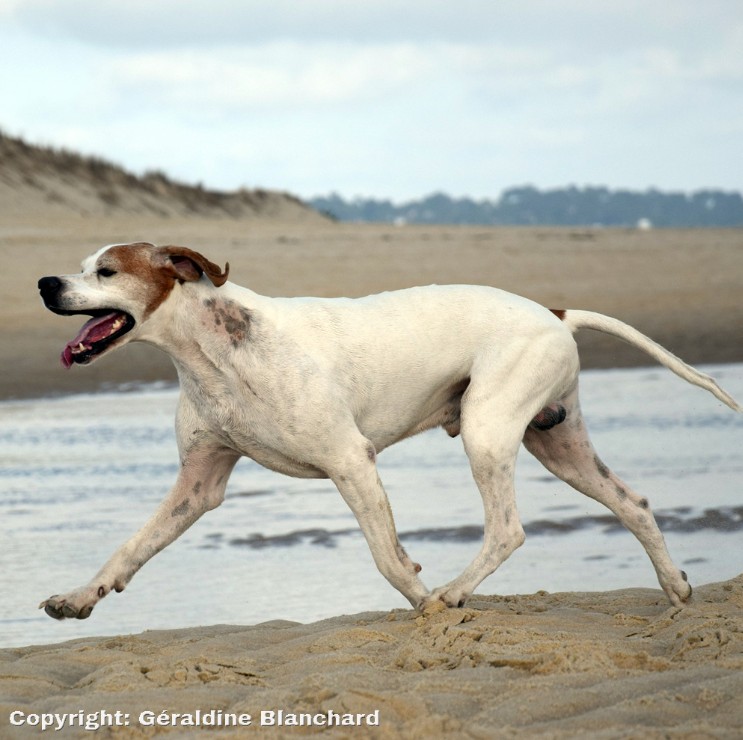Useful information and answers to the most frequently asked questions about homemade diet for a cat or dog.
Homemade diet for a cat or a dog: common questions
How do I know my dog is well fed ?
It’s not easy to tell, because mistakes in dog feeding don’t show quickly (fortunately). Yet, if a dog has been receiving the same diet for more than a month, certain criteria can give you an idea.

The weight should be stable
If it is losing weight, it is because it doesn’t get enough calories (it uses more than it consumes) or that it is sick (diseases consume calories, which the dog cannot benefit. For example intestinal parasitism, advanced diabetes, cancer, etc.).
On the other hand, if it is getting fat, it is because it eat too many calories, or because it is sick (a disease can put its metabolism in storage, rather than energy consumption. For example, hypothyroidism, or Cushing’s syndrome).
The weight should be optimal
Overweight (and a fortiori obesity) reduces life expectancy (on average 2 years in dogs), and increases the risk and severity of a large number of diseases.
However, is possible to treat overweight thanks to our recipes.
Your dog’s muscle mass should be developed and flexible
If muscle wasting is observed, particularly visible above the eyes, in the thighs and lumbar muscles, it may be related to a lack of protein in the diet or sample disease (associated with poor diet adjustment). Weight can be constant and body composition can change.

The coat should be shiny
When your dog feeding is right, its coat is shiny.
The coat is constantly renewed, especially twice a year, in spring and autumn. Food has a huge impact on hair and skin.
Many deficiencies and imbalances have a direct impact too.
It is not always easy to sort out where the issue may be coming from, since many nutrients can be involved.
If the coat is pricked, dry, dull, with dandruff, … it may be due to a lack of protein in the diet, a lack of amino acids (poor quality protein), a lack of essential fatty acids (omega 6 linoleic acids, and omega3 alpha-linolenic acids, both of plant origin). The issue can also come from a lack of vitamins (especially vitamin A retinol, of animal origin, and vitamins of the B group) or a lack of trace- elements (zinc, copper, iodine, manganese) …
If the black hair turns red … it can be a deficiency in copper in and / or aromatic amino acids (phenylalanine + tyrosine), essential for the synthesis of the black pigment.
The skin should be healthy
If the skin is red or itches a little, … once eliminate the problem of fleas causing itching but sometimes also inflammation due to intolerance to flea saliva, it can be due to a nutritional deficiency somewhere in your dog feeding -just as for the coat.
The first, invisible consequence is a drop in immunity and a decrease in the skin’s barrier role. Those allow the development of infections that would not have taken hold in optimal conditions. Skin disorders then set in, and sometimes you just see the consequences.
If the skin thickens, or if areas of depilation around the eyes and mouth become noticable, it can be due to a zinc deficiency. Which can be the consequence of an excess of calcium (too much carcass in the diet, for example).

Your dog should be lively and playful
A well-nourished dog is tonic and playful: a dog who seems weary, tired, not very reactive, can be so for medical reasons. But it can also be due to an insufficient food (then the dog loses weight), or of a diet too low in proteins and essential amino acids, vitamins, trace elements or even essential fatty acids.
The stools should be firm and not too bulky
The native diet (which is sometimes called household ration), generates the production of stools of reduced volume (less than 40 grams of stools emitted per 100g of dry matter ingested, i.e. 400 to 500 grams of household ration consumed – which comes down to 110 grams of kibble).
Diarrhea, constipation, alternating diarrhea and constipation can mean the diet is unsatisfactory in fiber content: too little or not enough. It can also mean the diet contains intrinsically poorly digestible components (overcooked proteins or oxidized fats).
Gas diarrhea, a slightly swollen belly, can be a sign of consumption of undercooked starch, or too much starch: the digestion of starch is possible by all dogs, but not necessarily in the same quantity for all of them, because not all have the same capacity to produce the enzyme which allows this digestion – amylase.
If your dog’s individual capacity is exceeded, the starch is not digested and is then fermented, which has the consequences mentioned above.
If all these signs of good health come together, then your dog’s diet is likely to be right !
Otherwise, a change to a better food quality, or more suited, should be considered.
Benefits of a homemade Diet
The advantages of a household ration are that you can try a diet that provides a lot of essential nutrients, in a very digestible form.
However, it is also restrictive. Although we give a lot of tips and advice to make storage and preparation easier, you still have to provide several ingredients, and mix them … and give at least twice a day – for a dog (four times daily for a cat).
Similar article on Géraldine's blog (in French)
The risks of a poorly designed diet
What ingredients can I give to a cat ?
If you are hesitating about the best ingredients to select for the homemade recipe for your cat, we have detailed for you the various options offered in the choice of ingredients.
Is a homemade diet suited in case of illiness ?
If your pet is sick, its nutritional needs may be different. For the diet to be suitable, you must request a homemade recipe in which the disease of your animal is specified.
However, during illness, even stabilized under treatment, only your veterinarian can request a recipe through his professional account.
We are bound to this mode of operation for ethical and legal reasons. Maybe your vet is not aware of this so don’t hesitate to tell him about it.
What is your opinion on BARF ?
Neither for nor against.
Depending on owner’s wish, time and investment, there is various ways of feeding an animal and we respect that.
We also respect dogs, individually: all dogs are not the same.
Everything is possible, solutions have to be found between anthropomorphism (the dog is not a human and has different nutritional needs) and ultracarnivorism (a dog is not a wolf).
To adapt feeding to animal’s nutritional needs and individual physiology is our only rule.
Check Géraldine article about barf (in french)
My pet has diarrhea since the implementation of homemade food: what shall I do?
When diarrhea appears with a homemade diet, the first 2 suspects are:
- starch not sufficiently cooked and/or frozen/thawed and/or stored for several days in a slightly cold refrigerator
- rapeseed oil: the latter being very unsaturated (this is what makes it interesting: essential fatty acids are polyunsaturated), it oxidizes easily, with heat, light... Once oxidized, it can lead to softening of the stool or even diarrhea and colitis.
We therefore recommend storing it in the refrigerator, choosing a small opaque bottle and avoiding organic (more often oxidized from the day of purchase).
Some questions about Vit'i5 ?